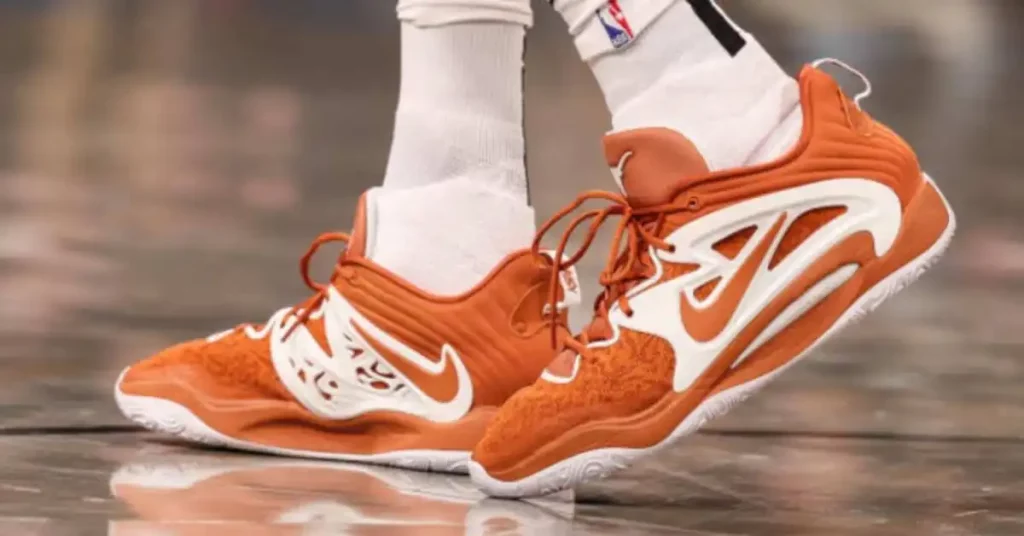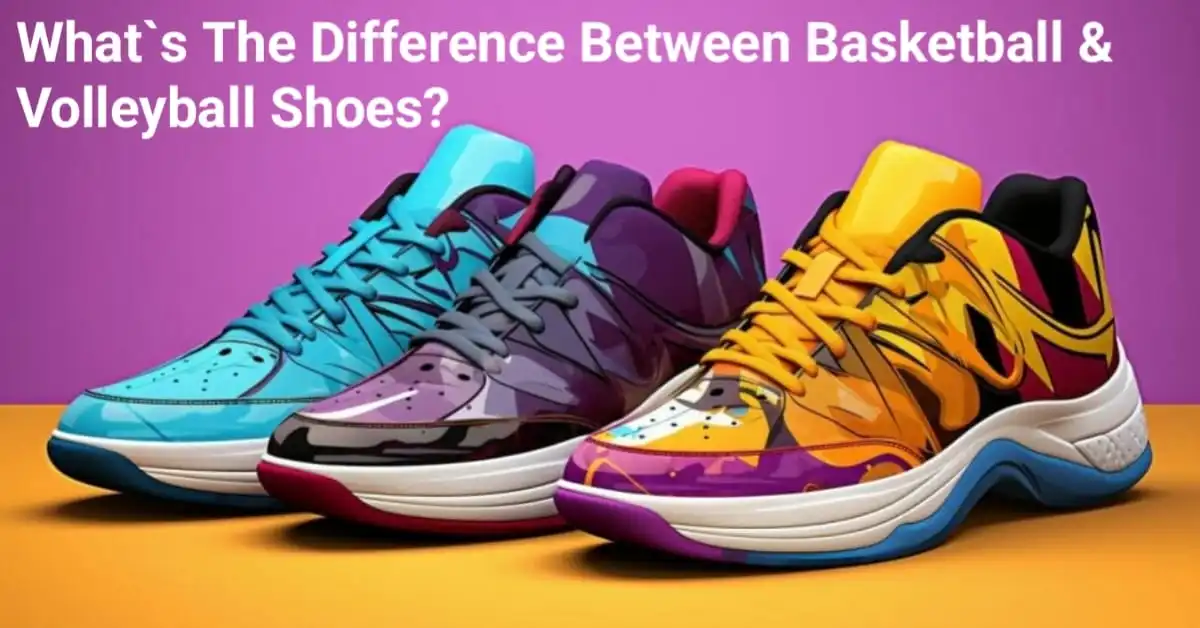Are you in the market for new athletic shoes but not sure where to start? When it comes to basketball and volleyball, it’s essential to understand the differences between the two types of shoes. Each sport requires specific features and designs to maximize performance and reduce the risk of injury.
In this article, we’ll break down the variations between basketball and volleyball shoes to help you make an informed decision for your next purchase.
Design and Construction Differences
When it comes to basketball and volleyball shoes, design and construction are tailored to the specific demands of each sport. Basketball shoes prioritize ankle support and midsole cushioning to absorb high-impact landings.
They often have high collars and more rigid ankle support features to prevent injuries during aggressive movements. Many basketball shoes also feature durable outsole patterns optimized for indoor courts.
On the other hand, volleyball shoes focus on quick lateral movements and grip on slippery surfaces. They offer lighter cushioning to facilitate quick jumps and movements, with a narrow and flexible design to accommodate quick changes in direction.
The outsole pattern of volleyball shoes is also designed for maximum traction, especially on the slick surface of a volleyball court.
It’s important to note that both basketball and volleyball shoes are made with durable materials to withstand the wear and tear of each sport, but the specific design and construction features differ to enhance performance in each respective sport.
Taking a Closer Look
Let’s break down the design and construction differences between basketball and volleyball shoes:
| Feature | Basketball Shoes | Volleyball Shoes |
|---|---|---|
| Ankle Support | Higher collars and more rigid support | Narrow and flexible design |
| Midsole Cushioning | Thicker cushioning for high-impact landings | Lighter cushioning for quick jumps and movements |
| Outsole Pattern | Optimized for indoor courts with durable patterns | Designed for maximum traction on slippery surfaces |
| Material | Durable to withstand aggressive play | Lightweight and flexible for quick movements |
Understanding these design and construction differences can help you choose the right shoe for your sport. Whether you’re playing basketball or volleyball, having the right shoe can make all the difference in your performance and help prevent injuries.
Traction and Grip

When it comes to basketball and volleyball, traction and grip are essential for optimizing your performance. However, the demands placed on your shoes differ depending on which sport you’re playing.
Basketball shoes are designed to handle multidirectional movements and require a strong grip on indoor courts. The outsole patterns are often wider and more pronounced, allowing you to make quick stops and changes in direction without slipping. On the other hand, volleyball shoes prioritize quick lateral movements and grip on slippery surfaces.
The outsole patterns are usually thinner and more closely spaced, providing better traction on surfaces such as gym floors or sand.
It’s important to choose a shoe that provides the right traction and grip for the sport you’re playing. Wearing improper shoes can result in slipping, which can cause serious injuries that could have been prevented with the appropriate footwear.
Cushioning and Impact Protection
Another significant difference between basketball and volleyball shoes is the level of cushioning and impact protection they provide.
Basketball shoes typically feature thicker cushioning to absorb high-impact landings from jumps and prevent injuries such as shin splints and joint pain. The midsole of basketball shoes is designed to deliver maximum shock absorption, providing a stable base for quick cuts, jumps, and sprints.
Volleyball, on the other hand, requires lighter cushioning to facilitate quick jumps and movements without sacrificing stability. Volleyball shoes are designed to be lightweight to help you move quickly without feeling weighed down, so the cushioning is typically minimal.
When selecting a basketball or volleyball shoe, consider your playing style and the type of court or surface you’ll be playing on. This will help you choose a shoe that provides the right level of cushioning and impact protection for you.
Ankle Support and Stability
In terms of ankle support and stability, basketball and volleyball shoes have different features to cater to the demands of their respective sports. Basketball shoes often have higher collars and more rigid ankle support to prevent injuries during aggressive movements such as jumping and landing. The added support can also provide extra stability during lateral movements.
On the other hand, volleyball shoes prioritize flexibility for quick changes in direction. They usually have a lower collar and less rigid ankle support to allow for ankle mobility and enhance the player’s ability to move around the court quickly.
Style and Aesthetics
While basketball and volleyball shoes differ significantly in function and performance, they also contrast in style and aesthetics. Basketball shoes are known for their bold colors, flashy designs, and signature athlete endorsements.
Popular brands such as Nike, Adidas, and Under Armour offer a range of basketball shoe designs that cater to both performance and fashion sensibilities.
In contrast, volleyball shoes tend to have a more streamlined and minimalist design. Functionality takes precedence over aesthetics, with brands such as Mizuno, Asics, and Adidas producing volleyball shoes that prioritize performance and comfort over style.
This minimalistic approach ensures that volleyball players can focus on their game without any distractions.
FAQs
Is there a difference between basketball and volleyball shoes?
Yes, there are differences. Basketball shoes are designed for jumping, cutting, and support, while volleyball shoes focus on quick movements and stability.
How do you know if the shoe is for volleyball?
Look for lightweight, low-top shoes with good grip and cushioning in the sole. They often have gum rubber outsoles for better traction on the court.
How do you tell if it’s a basketball shoe?
Basketball shoes are typically high-top, with extra ankle support. They emphasize shock absorption and are bulkier than volleyball shoes.
Can you wear Kyries for volleyball?
Yes, Kyrie Irving’s basketball shoes (Kyries) can be worn for volleyball if they offer good traction, support, and comfort for your movements.
Can you wear sneakers for volleyball?
Yes, you can wear sneakers for volleyball, but it’s better to choose ones with suitable features like grip and support.
Can you wear regular sneakers for volleyball?
You can wear regular sneakers for volleyball if they provide good traction, cushioning, and stability. However, purpose-made volleyball shoes are often a better choice for performance and injury prevention.
Conclusion
In conclusion, it’s clear that basketball and volleyball shoes have significant differences in design and construction, traction and grip, cushioning and impact protection, ankle support and stability, as well as style and aesthetics.
Choosing the right shoe for each sport is critical for optimizing performance and reducing the risk of injury. Consider your specific needs and preferences when selecting basketball or volleyball shoes.
Whether you’re a seasoned athlete or a novice player, investing in the appropriate footwear can make all the difference in your game. So, take the time to evaluate your options and choose the shoes that will help you reach your full potential on the court.
